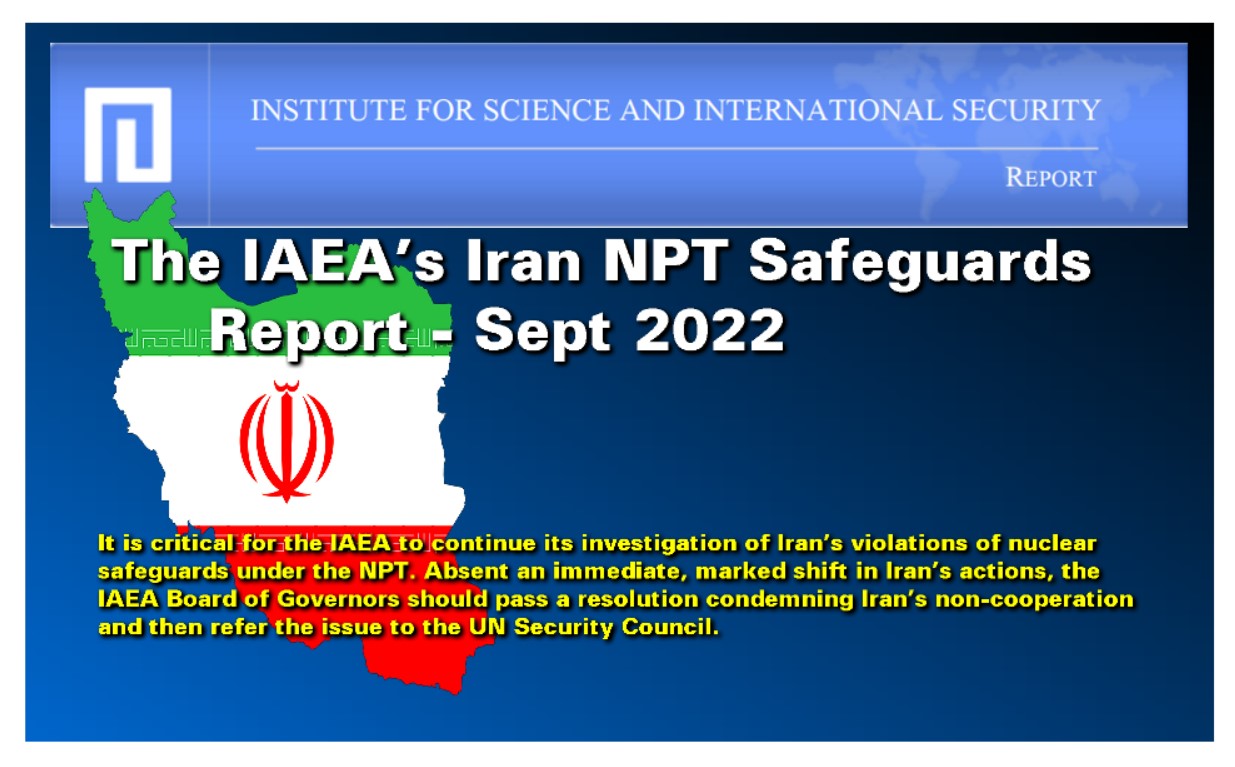
by David Albright, Sarah Burkhard, and Andrea Stricker [1]
September 8, 2022
Executive Summary
Background
- Iran has consistently violated its obligations under its comprehensive safeguards agreement (CSA), a key part of the Nuclear Non-Proliferation Treaty (NPT) to cooperate with the International Atomic Energy Agency (IAEA) and fully account for its past and present nuclear activities.
- For nearly four years, the IAEA has been investigating the presence of man-made uranium particles at three Iranian sites and was seeking information about nuclear material and activities at a fourth site.
- In March 2022, the IAEA found Iran in breach of its safeguards obligations for failing to declare its use of nuclear material at one of these sites, Lavisan-Shian. In June 2022, the IAEA’s 35-nation Board of Governors passed a censure resolution against Iran for non-cooperation with the IAEA with only China and Russia voting against.
- This analysis summarizes and assesses information in the IAEA’s latest NPT safeguards report on Iran, issued on September 7, 2022. It also provides background information on the former Iranian nuclear weapons sites under IAEA investigation.
Findings
- Since the last IAEA report in June, there has been no progress or cooperation from Iran to resolve the outstanding safeguards issues.
- The IAEA requests “technically credible explanations” regarding the presence and origin of uranium particles detected at the three locations, as well as the “current location(s) of the nuclear material and/or of the contaminated equipment.” Thus, it is unlikely that the four locations publicly discussed by the IAEA are the only remaining sites in Iran with traces of undeclared uranium.




